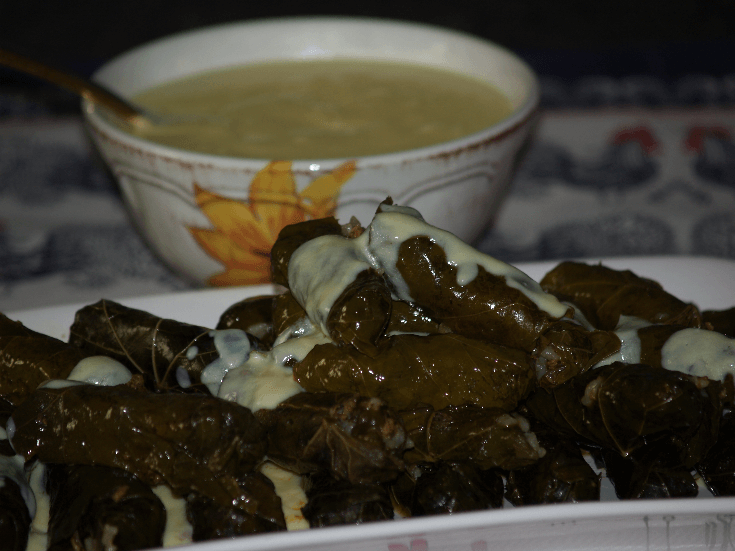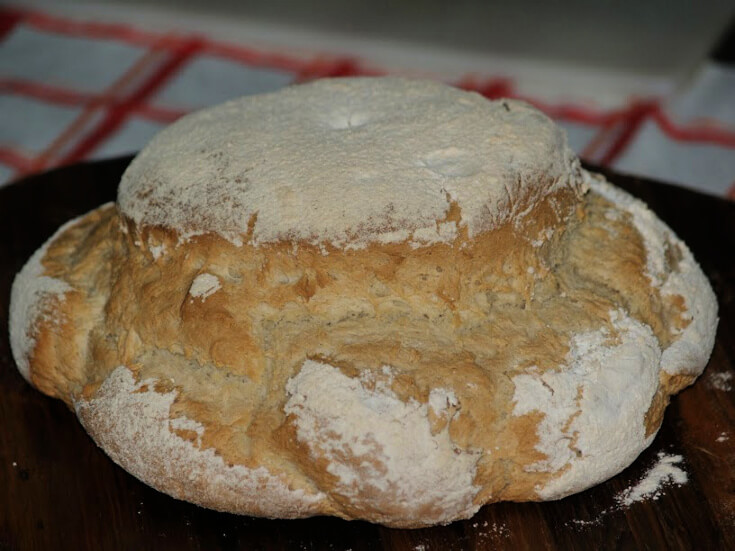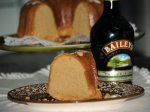- Painless Cooking
- How to Cook
- with Vinegar
Cooking with Vinegar
Cooking with vinegar has been done for thousands of years. Apple cider vinegar is one of those staples in the kitchen that I have never been without; currently I probably have several gallons of apple cider vinegar, white distilled vinegar, red wine vinegar and several others in smaller bottles. This is one of the magical and healthful kitchen products that should never be overlooked whether you are here in the United States or anywhere in the world.
Besides the benefits of cooking with vinegar, the natural medicinal purposes that it offers are enough reason to stock up on it. I must tell you a little personal story. My nephew came to visit me during the stressful hurricane times in Florida. He asked if I had any anti acids. I did, but instead I offered him some apple cider vinegar because I know it is natural and it works. He accepted. I gave him a full tablespoon and told him to swallow quickly. After he choked it down I asked if it helped. Mike said it did but if it didn’t he wouldn’t tell me again. We always laugh over this incident but it truly does work.
As a child I remember Mom using vinegar for many things. Mom never professed to be for “natural” or “alternative” or “preventative” health care; it was just a way of life. These things are established when you have very little money and my mom was also very smart. We use to use vinegar as a hair rinse, Mom would wash windows with vinegar and add it to soap and water when cleaning. We would use vinegar for our sunburns and for weight loss; I do not know about the weight loss, nothing seemed to help me there! It really is a magical product.
More tips for our amazing kitchen staple: Effective for dandruff treatment, Used for too much oil or dryness in skin, Used to lighten age spots, Mix with fragrances to wash body for odor, Used as bug repellant, Used to make tanning lotion, Treatment of nail fungus or athletics feet, Bed wetting, Relieves muscle aches, Chilled compresses for headaches, Rubbed on gums for toothaches, Preventing asthma and many more.
The word vinegar comes from an old French word meaning sour wine which is why we have so many types of vinegar. When cooking with vinegar or even blending cold vinegar, each type of vinegar adds a different flavor to the recipe. Apple cider vinegar is my favorite and I use more of it than any. I always keep on hand a gallon or two of white vinegar. It also is very versatile but milder than apple cider vinegar. Red wine vinegar (there is also white wine vinegar) is also a staple in my pantry; I love it in salad dressings and marinades.
Cooking with vinegar has always just been a way of life in my kitchen; my recipes with it are endless. I rarely ever make pie crust without vinegar. It gives the dough a little elasticity for handling without interrupting the flakiness and tenderness. It is the best pie crust and it never fails.
VINEGAR COOKIES
Cooking with vinegar in this simple little butter cookie recipe adds great flavor; you can sprinkle with colored sugar crystals to decorate.
- 1 Cup softened butter
- 1 Cup sugar
- 2 Cups flour
- ½ Teaspoon baking soda
- 1 Teaspoon vinegar
Preheat oven to 350F degrees.
Cream butter and sugar; mix in the flour, soda and vinegar.
Make small balls and place on greased cookie sheet; flatten a little with a fork or bottom of floured glass.
Bake 8 to 10 minutes. Makes approximately 3 ½ dozens.
VINEGAR CHOCOLATE CAKE
Cooking with vinegar makes this very easy and delicious chocolate cake.
- 3 Cups flour
- 2 Cups sugar
- 6 Tablespoons Hershey’s cocoa
- 2 Teaspoons baking soda
- ½ Teaspoon salt
- ¾ Cup cooking oil
- 2 Tablespoons vinegar
- 1 Teaspoon vanilla
- 2 Cups cold water
Preheat oven to 350F degrees.
Sift dry ingredients together in ungreased 9 X 13 inch baking pan; make a hole in the center of sifted ingredients.
Combine the oil, vinegar, vanilla and water; pour liquid into hole and mix well with fork.
Bake for 25 to 30 minutes.
Frost in pan with favorite icing and serve from pan.
I love the deep, rich and slightly sweet flavor of Balsamic vinegar. Although this comes in smaller containers than the apple cider vinegar, I never let myself run out of this one. Sometimes I just use this plain on my salads and it is great; other times I blend it with herbs and spices. Balsamic vinegar is made from a grape base and comes in many degrees of quality; it can be aged for up to 100 years. When cooking with vinegar and you want to use balsamic vinegar, I buy mine from Sam’s or Costco and it is plenty good for me.
I always keep a smaller bottle of rice wine vinegar on hand for my Japanese and Chinese recipes. I use the light variety but there is also a red and black. The white rice vinegar is mild with a light flavor which blends well in all recipes. Some varieties of rice vinegars are sweetened or seasoned with spices and added flavors. Some other vinegars that you might want to check out are coconut, palm, cane and raisin.
CHINESE NOODLE SALAD
When cooking with vinegar, try Black Chinese Vinegar in this recipe.
- 1 Pound Chinese noodles
- 4 Tablespoons sesame oil
- 4 Tablespoons black soy sauce
- 1 ½ Tablespoons black Chinese vinegar
- 1 Tablespoon sesame seeds
- 1 ½ Tablespoon sugar
- ¾ Teaspoon salt
- 1 Tablespoon hot pepper oil
- 5 Thinly sliced green onions
Boil noodles 4 to 5 minutes; drain, rinse with cold water and place in large bowl.
Combine remaining ingredients, except for the green onions, and toss with noodles to coat.
Chill noodles overnight to marinate and add green onions right before serving.
VINEGAR MARINADE an easy cooking with vinegar recipe
When cooking with vinegar you will find a little vinegar added to a marinade recipe quickly increases the tenderizing process of tough meats.
- 2/3 Cup olive oil
- ½ Cup red wine vinegar
- ¼ Teaspoon black pepper
- ½ Teaspoon dry mustard
- 1 Teaspoon sugar
- 1 Teaspoon garlic salt
- Drop hot pepper sauce
Mix all ingredients together. Pour over steak, cover and marinate in refrigerator. Depending on the toughness of the cut of steak, marinate from 2 hours to overnight.
If you are one who enjoys cooking with vinegar, try making flavored vinegars for salad and different recipes. Use clean Glass bottles or jars with a tight cap on them. Use only cork or plastic lids because vinegar is corrosive.
Select the flavors that you like in the vinegar. Place the herbs, peeled onions or whatever you select in a mortar and lightly crush with pestle. (You can also crush on a cutting board with flat side of cooking knife.) Place ingredients in the clean bottle.
Heat vinegar in an enamel pot until warm and pour into the bottle. Tight seal bottle and set in a sunny window for two weeks shaking daily. (NOTE: If you do not have a sunny window the process will take a month.) After desired flavor has been reached, strain it and pour into a clean bottle; add fresh whole herbs for decoration if desired.
Here are some suggestions for using 16 ounces of white or cider vinegar.
- 1 Cup fresh herbs (rosemary, thyme or sage or combination) plus 3 peeled shallots
- 2 Tablespoons mustard seed
- 1 Long stem tarragon
- ½ Cup hulled strawberries plus ¼ cup basil
Many cooks who like cooking with vinegar also like making their own vinegar. I know many who regularly make cider vinegar; this is how to do it.
Put apple cider in a clean non metal container and cover with a cloth.
It could have a tendency to mold before starting the fermenting so add a little wine yeast to get it started; stir a few times each day for several days.
Once the cider has settled down set it in a cool place and let it continue the process.
When it has reached a desirable flavor bottle it in clean bottles or jars; seal with non metal lids and store in a cool dark place.
NOTE: If you want to use your vinegar for home canning such as pickles, get an acid tester (from canning supplies and wine making supplies sources) to make sure the acidity is high enough for safe canning.




